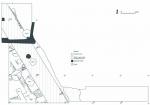Summary (English)
SEXAGINTA PRISTA (Varbin Varbanov – ramonearhaeology@abv.bg, Nikola Rusev, Deyan Dragoev) A sector of the eastern fortification wall was discovered, built in opus vittatum with an emplecton of roughly-cut stones bonded with mortar, 3.30 – 3.25 m wide and preserved up to 7.15 m in height. The fortification was built in the beginning of the 4th century AD and functioned until the end of the 6th century AD. It was dated by coins of Anastasius I Dicorus, Justin I and Justin II. Two houses were explored in the fortress. House No. 1 was built in the 6th century AD, adjoining the inner side of the fortification wall. It was constructed of roughly-cut stones bonded with mortar and had a roof covered with tegulae and imbrices. The building was burned. House No. 2 adjoined the inner side of the fortification wall and consisted of five rooms built of roughly-cut stones bonded with clay. The upper parts of the wall were constructed of sun-dried bricks and the roof was covered with tiles. Two fragments from roof-tiles had stamps that read: RVMORID and LEGIITAL. A fragment from a votive relief of the Thracian Horseman that was re-used in the walls was discovered in the debris. House No. 2 was destroyed by earthquake. Coins from the beginning of the 3rd to the middle of the 5th centuries AD were found in the house: the earliest ones belonged to Caracalla and also included folles of the beginning of the 4th century AD, and the latest ones belonged to Arcadius, Honorius, Pulcheria and Theodosius II. The building dated to the first half of the 5th century AD. Its foundations were dug into a stratum of the 4th century AD. Three pits, two hearths and a place for stirring mortar of the 4th – 6th centuries AD were discovered. During the excavations, 430 coins were found.
- Varbin Varbanov - Regional Museum of History – Ruse
- Nikola Rusev - Museum of History – Popovo
- Deyan Dragoev - Regional Museum of History – Ruse
Director
Team
Research Body
- Regional Museum of History – Ruse






![Download [PDF]](/excavation/skins/fasti/images/results/download_sml.png)
